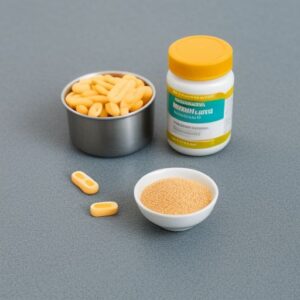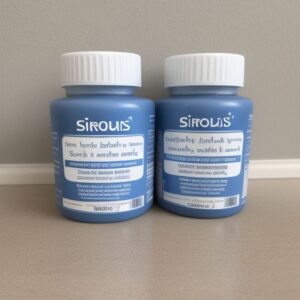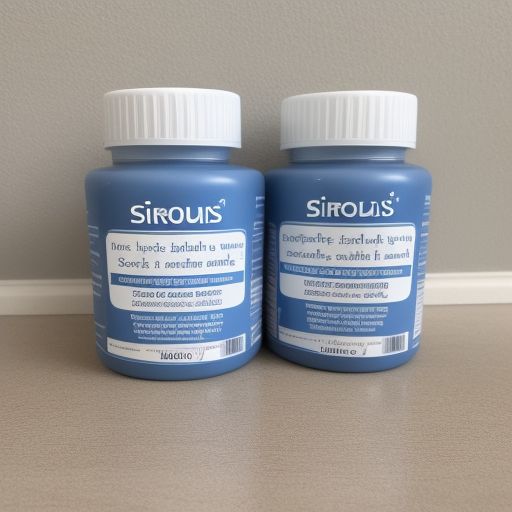Unlocking the Biomedical Riddle: Diving Deep into Sirolimus and Tacrolimus
Sirolimus and Tacrolimus
In the vast landscape of immunosuppressive medications, a few drugs stand out for their effectiveness in managing autoimmune diseases and preventing organ transplant rejection. Among such drugs, sirolimus and tacrolimus have drawn worldwide attention. However, confusion abounds regarding their specific uses, mechanisms, and side effects. Today, let’s strive to untangle this biomedical riddle and gain a more profound understanding of the roles of sirolimus and tacrolimus in contemporary healthcare.

Sirolimus: The Power Player Beyond Transplant Rejection
Sirolimus, also known as Rapamycin, is a potent immunosuppressant with a unique mode of action that has made it indispensable in transplant medicine.
The Mechanism of Sirolimus
Sirolimus works by inhibiting the activation of T cells. These immune cells, under normal circumstances, help the body recognize and attack foreign substances, including transplanted organs.
- Sirolimus binds to the FK-binding protein-12 (FKBP-12) to establish a complex.
- This complex then inhibits the mammalian target of rapamycin (mTOR), a key regulator protein within the cell.
- The entire process results in the blockade of a series of intracellular signaling pathways, leading to an inhibition of immune responses.
“Sirolimus, a groundbreaking immunosuppressant, helps tame the body’s immune response. It does so by inhibiting T cell activation, enabling long-term survival of transplanted organs.”
Sirolimus Beyond The Scope of Transplants
Sirolimus has also made significant strides in clinical areas beyond transplant medicine:
- Its unique ability to thwart cell growth and proliferation has been useful in treating illnesses like lymphangioleiomyomatosis (LAM), a rare disease where uncontrolled cell growth occurs in certain lung tissues.
- Studies indicate that sirolimus could be effective in managing malignant tumors, emphasizing its potential as an anti-cancer drug.
Tacrolimus: The Multitalented Gamechanger
Tacrolimus is another powerful immunosuppressive drug highly valued for its versatile use in treating various autoimmune conditions and skin conditions, like atopic dermatitis.
Tacrolimus and Its Intricate Workings
Interestingly, while Tacrolimus shares a common target with Sirolimus (FKBP-12), its mechanism of action is slightly different.
- After binding to FKBP-12, the Tacrolimus-FKBP-12 complex inhibits calcineurin, an enzyme essential in activating the T cells.
- This suppression reduces the production of inflammatory cytokines, thereby diminishing the immune responses.
Tacrolimus: Beyond Organ Transplants
Tacrolimus stands as a titan in dermatology with its efficacy in atopic dermatitis:
- Applied topically, it helps control inflammation and relieve itching.
- Long-term studies have proven its safety and demonstrated fewer side effects compared to traditional topical steroids.
The Mystery Resolved: Sirolimus Vs Tacrolimus
Though both sirolimus and tacrolimus target FKBP-12 and are powerful immunosuppressants, they work through different pathways and have distinctive advantages.
“While Sirolimus and Tacrolimus both tame the immune responses, they bring their unique strengths to the treatment table – expanding their utility way beyond transplantation medicine.”

Conclusion: The Unseen Heroes of Biomedicine
Over the past few decades, sirolimus and tacrolimus have fundamentally changed healthcare outcomes. Their ability to keep autoimmune disorders in check and improve the success rate of transplants significantly adds to their indispensability.
No doubt, like any medication, they have potential side effects. Nevertheless, if used judiciously, their benefits largely outweigh the risks, further establishing their necessity in modern medicine.
In the unraveling journey of biomedicine, it’s vital to understand such potent players; they subtly work behind the scenes, making remarkable contributions to human health and wellbeing.
Learn More- Sirolimus Copay Card





